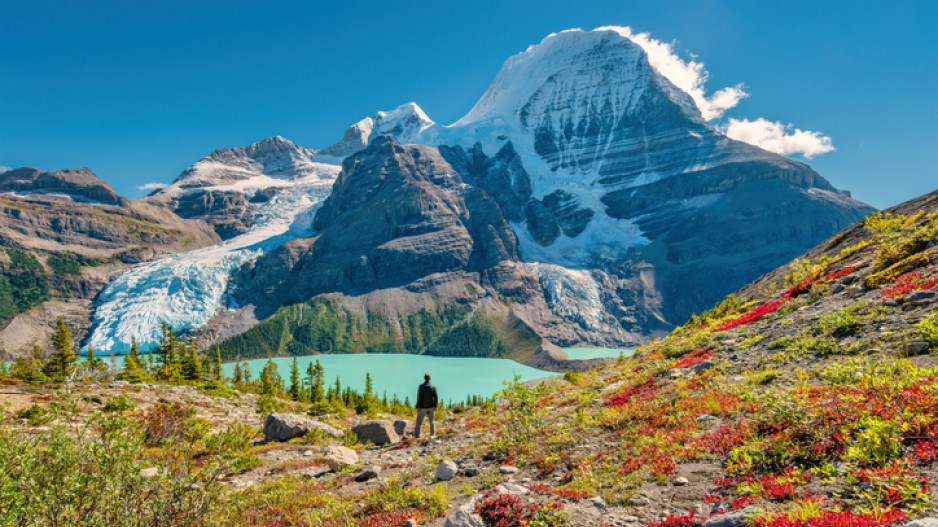The Crown corporation that promotes B.C. as a tourism destination today revealed its new corporate strategy.
Destination British Columbia executives told industry in a Zoom call key prongs in their blueprint to attract the world and stimulate the province's economy.
Their plan to promote Indigenous tourism, which has become more prominent throughout the past decade, remains intact.
One thing that is new is the organization's more concerted focus on promoting B.C.'s regions as distinct destinations, apart from promoting the province as a whole.
Another new focus is a heightened effort to lure travellers during the province's shoulder seasons.
The organization's vice-president of global marketing, Maya Lange, used the analogy of an octopus, which she said has nine brains – one main brain and one mini-brain in each of its eight tentacles – to illustrate her organization's planned decentralized approach to marketing B.C.
Destination BC's future work is set to be done more in partnership with large destination management organizations (DMOs), such as Destination Vancouver, Tourism Whistler and Tourism Kelowna, she explained.
"We need to simplify the number of B.C. travel options being promoted," said Lange, adding that marketing too many experiences can confuse potential visitors.
"We want to move towards promoting and developing a small number of globally compelling routes and places that cover all of British Columbia."
BIV asked Lange after the Zoom call how the province would whittle down the number of experiences that it promotes to global travellers.
She said that the potential trips that are promoted will not be as specific as focusing on a single tourist attraction. Instead, the proposed visits being marketed would cover larger territories, and have multiple options for things to do along the way.
Two of these "routes and places" that Destination BC plans to start marketing later this year include B.C.'s North, and what she called a route from the rainforest to the Rockies – or going between Vancouver and the Alberta border. Other routes and places are set to be unveiled in future years, Lange said.
Destination BC's role is not simply as a marketer but also as a destination developer, she stressed.
That means focusing on "the experiences and the infrastructure that needs to be built out over the long term."
Initial promotion of the route between Vancouver and the Rocky Mountains will be on road travel, she said. Marketing material will highlight that it is possible to travel by electric vehicles, given that there is a sufficient number of charging stations along the way. Travel on the route in recreational vehicles will also be suggested, Lange said.
The Rocky Mountaineer luxury train travels the route between Vancouver and Banff and is a "tremendous experience," Lange said, but it will not be a major focus of the initial campaign to highlight the "rainforest to the Rockies" because it is not on roads, but rather railway track.
Nonetheless, Rick Antonson, a travel author who spent many years as CEO of Tourism Vancouver until 2014, before that organization rebranded as Destination Vancouver, in April is set to release his new book Train Beyond The Mountains: Journeys on the Rocky Mountaineer.
That memoir could nicely complement Destination BC's campaign on the rainforest to the Rockies as it documents Antonson's 2019 voyage on the luxury train with his grandson, who was then 10 years old.
Given that the campaign is focused on travellers using Highways 1, 3 and 5, however, attractions in the campaign are likely to include things such as:
• the Yoho National Park's Burgess Shale forest hike (Highway 1);
• Nk'mip Desert Cultural Centre (Highway 3); and
• nature around the Canadian Rockies' highest peak, Mt. Robson (Highway 5).
Lange said her organization's renewed focus on marketing for tourists to come to B.C. during shoulder seasons is because the province continues to have months where there is little tourism.
"Despite our best efforts, the majority of visitation to most rural areas and small towns still takes place during the peak season," she said. "For the last 20 years, over 64 per cent of international visitors to B.C. have traveled here in our core summer months, between May and September."
She suggested that creating storm watching in Tofino as a winter experience could help that community's tourism businesses even out monthly revenue.
Turning the weakness of winter storms into an attraction is a concept similar to one that Destination Vancouver CEO Royce Chwin last week outlined in a presentation to the Greater Vancouver Board of Trade.
"Let's stop apologizing for the rain," Chwin said. "That's part of what makes us awesome....The city is not green by accident."
He then noted the popular shoulder-season March festival in Austin, Texas, known as South by Southwest, which celebrates the convergence of technology, film, music, education, and culture.
"Why don't we have a North by Northwest?" Chwin asked. "Why do we not pull the city together, pull that event off and showcase that we're not just producers here, but we're builders in the space that we can wrap up, with technology, arts and culture? We can be a powerhouse. We just have to pull it together."



